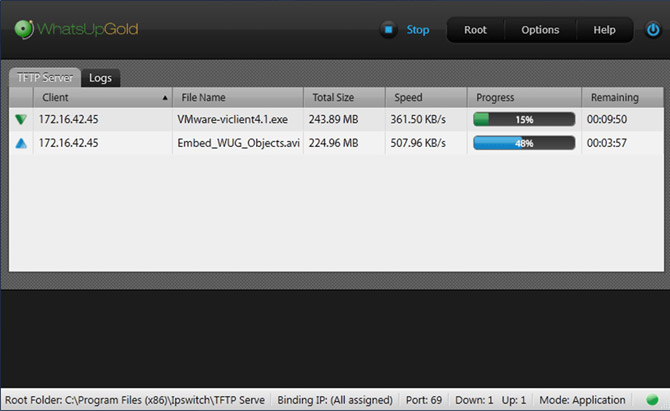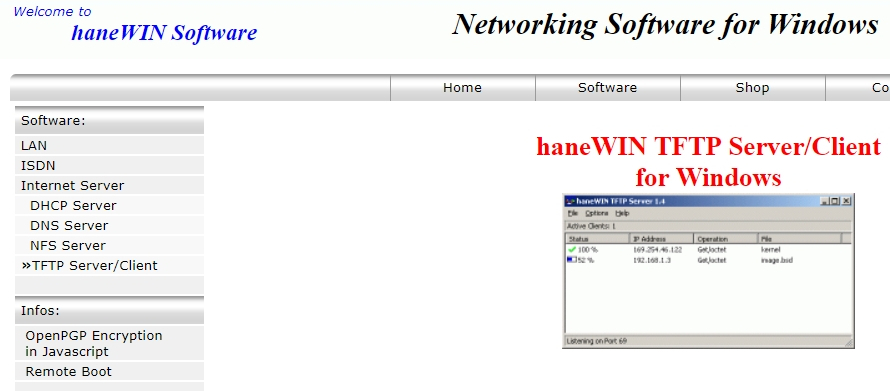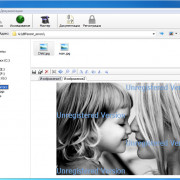How to install and test tftp client on windows 10
Содержание:
- [edit] Linux
- [edit] General
- What is TFTP?
- SolarWinds TFTP Server.exe безопасный, или это вирус или вредоносное ПО?
- Установите программное обеспечение сервера TFTP и сопутствующие пакеты
- Install TFTP Client on Windows 10
- Data structures
- Function list
- Final Words
- How to Check a TFTP Server from Windows 10 Client
- PC Functioning as a TFTP Server
- Установка и настройка TFTP сервера
- Что такое FTP?
- WhatsUp TFTP Server
- Is TFTP recovery over Ethernet Supported by my Device?
- What is TFTP Recovery over Ethernet?
- Как проверить работу сервера tftpd32?
- Поднятие tftpd32 сервера на Windows
- Соображения безопасности
- Transferring Files with TFTP
- 3 простых шага по исправлению ошибок SOLARWINDS-TFTP-SERVER.EXE
- TFTP Server Configuration
- загрузить файлы
- haneWin TFTP Server
- TFTP Installation
- Handling large files
[edit] Linux
In Linux, tftp can generally be installed with whatever package manager your distribution uses.
on suse:
smart install tftp
on fedora:
yum install tftp
on ubuntu
sudo apt-get install tftp
etc.
The tftp client for Linux and OS X is very similar. When invoked, it gives the user a prompt and takes commands from the standard input.
Binary mode can be set with command-line flags — in OS X, the «-e» flag sets binary mode (among other things which are less important), and in Linux «-m binary». Binary can be set from the prompt in either (this is done below for consistency).
Typical usage looks like:
tftp 192.168.x.x > binary > put dd-wrt.vXX_XXX.XXX
Because the transfer must be initiated in a narrow time window during the router’s bootup, tftp’s retransmit option is useful. In the following sequence of commands, tftp will retry to send the file every second for one minute. This can be issued just before the router is booted, so that it will retry to send every second while the router boots.
tftp 192.168.x.x > binary > rexmt 1 > timeout 60 > put dd-wrt.vXX_XXX.XXX
If it worked, it will say something like «Sent 1769472 bytes in 9.0 seconds»
If it didn’t work, it will say «Transfer timed out.» This is often because it cannot connect to the IP address. Make sure you have manually set your computer’s IP address to one in the router’s subnet.
You can quit tftp with the ‘quit’ command or hitting ctrl+D.
Using atftp on Linux
Another way of doing this is using atftp. You can install aftp by search it in your package manager.
On Ubuntu:
sudo aptitude install atftp
On Debian (as root):
aptitude install atftp
On Fedora (as root):
yum install atftp
On Suse (as root):
smart install atftp
Then you go to the folder where you downloaded the official Linksys firmware, for instance if you downloaded it in your desktop:
cd ~Desktop
Unrar the file, for instance if the file is WRT54GL_v4.30.11_012_ETSI_EN_code.rar
unrar x WRT54GL_v4.30.11_012_ETSI_EN_code.rar
Rename the firmware to code.bin.
cp WRT54GL_v4.30.11_012_ETSI_EN_code.bin code.bin
Then you prepare this command (do not press enter yet):
atftp --option "mode octet" --option "timeout 60" --verbose --trace -p -l code.bin 192.168.1.1
Disconnect all your network cables from your router, only leaving one from the computer to the router. Then open another terminal and ping to 192.168.1.1
ping 192.168.1.1
About the atftp command: we are putting (-p) a local file (-l) called code.bin to the IP address 192.168.1.1 asking for fully information (verbose) and showing all packages (trace), also that it must be trying for one minute (timeout 60) and in octet mode. Remember, if you get «code pattern error», try with the official Linksys firmware. More information:
man atftp atftp --help
Important: you should always try atftp with the official firmware and then flashing to DD-WRT with the HTTP webpage on Administration, «Upgrade Firmware»; specially if you get «code pattern error».
Note: if you use Gnome or KDE you can get problems while trying to put your static IP address. Most of the times, applications like NetworkManager (aka nm-applet) or knetworkmanager will try to get a dynamic IP address, so you should first kill them. For example:
sudo killall NetworkManager
or
sudo killall nm-applet
[edit] General
This article describes how to do an initial flash or a TFTP recovery flash for your device.
- Unplug the router, get a for the PC, and connect it via network cable to a router LAN port
- Set a fixed IP address on the PC with the same network as your router, e.g. Router: 192.168.1.1, PC: 192.168.1.2
- Setup the TFTP client, then start a continuous ping (-t switch is needed for this in Windows) to the router
- Plug in the router and start the TFTP client as soon as there is a TTL=100 ping response. The client should show transfer.
- TTL=64 means application code has been reached. If the router isn’t responding, it is soft-bricked (use OEM firmware)
- Read about timing problems below:
Special Asus TFTP Flashing Procedures
Some routers like the Asus WL-500xx series (WL-500G, WL-500G Premium, WL-500W, WL-500G Deluxe), need additional steps to perform a complete and proper initial flash. See this wiki page: Asus TFTP Flash
Special for Vista, Win7 and Win 2008
In order to catch the narrow window for TFTP flash, you should use platforms with simple TCP/IP implementations that don’t have CTCP implemented: Windows XP or Linux are reported to work, but some have reported significant problems with Vista, Windows 7 or Windows 2008.
For more information see this posting
Edit: While some may have reported problems, CTCP is definitely not the issue, because it is disabled by default in Windows Vista and Windows 7. So unless people are specifically turning it on, it isn’t running. I personally just used TFTP on my router with no difficulties, although mine is a Netgear WNDR3700 that was waiting for a TFTP flash and didn’t have this race condition at boot as some of these routers seem to. But again, even if you have an issue it’s not CTCP. Check out the wikipedia article on CTCP for information on how to check if it is running and how to disable it (both are simple command line entries).
If having issues, try connecting a separate network switch between the PC and router, so the PC network port sees a connection before the router port is up. This should allow for a faster ping reply. Then follow the instructions as normal.
Special for Linksys WRT54GL Users
If the router seems to be bricked so that the power light is constantly blinking and pinging the router results in TLL=100 continuously, then there is still a great chance that tftp can help.
Firstly you must flash the router with the original firmware available at Linksys homepage www.linksys.com, since flashing it with DD-WRT probably won’t give any result at all. Then do a 30/30/30 and after that you can flash with DD-WRT Mini. The initial flashing can be done with only the mini version, perhaps later you can move on to bigger versions of it.
What is TFTP?
Current FTP sessions support a lot of different commands. While logged in to an FTP server, users can usually list, delete, rename, upload, or download files and change directories. In contrast, TFTP offers only the ability to upload or download a file and uses UDP over IP instead of the more standard TCP/IP stack.
The protocol is not capable of allowing more advanced functionality but compensates by using the lockstep method of fault-tolerance that makes it extremely reliable. Due to this limited functionality, TFTP servers can have an extremely small footprint on the disk as well as in memory, making it ideal for use in embedded network devices.
Linux is far and away the most common operating system on the type of devices where you’re likely to encounter a TFTP server. But, there is also a rich ecosystem of Windows and macOS devices that run device firmware (think Apple TVs and Microsoft Surface for a few examples).
See also:
- Best SCP servers
- Best SFTP servers
SolarWinds TFTP Server.exe безопасный, или это вирус или вредоносное ПО?
Первое, что поможет вам определить, является ли тот или иной файл законным процессом Windows или вирусом, это местоположение самого исполняемого файла. Например, такой процесс, как SolarWinds TFTP Server.exe, должен запускаться из C: \ Program Files \ SolarWinds \ TFTP Server \ SolarWinds TFTP Server.exe и нигде в другом месте.
Если статус процесса «Проверенная подписывающая сторона» указан как «Невозможно проверить», вам следует взглянуть на процесс. Не все хорошие процессы Windows имеют метку проверенной подписи, но ни один из плохих.
Наиболее важные факты о SolarWinds TFTP Server.exe:
Если у вас возникли какие-либо трудности с этим исполняемым файлом, перед удалением SolarWinds TFTP Server.exe вы должны определить, заслуживает ли он доверия. Для этого найдите этот процесс в диспетчере задач.
Найдите его местоположение (оно должно быть в C: \ Program Files \ SolarWinds \ TFTP Server \) и сравните размер и т. Д. С приведенными выше фактами.
Если вы подозреваете, что можете быть заражены вирусом, вы должны немедленно попытаться это исправить
Чтобы удалить вирус SolarWinds TFTP Server.exe, необходимо Загрузите и установите приложение полной безопасности, например Malwarebytes., Обратите внимание, что не все инструменты могут обнаружить все типы вредоносных программ, поэтому вам может потребоваться попробовать несколько вариантов, прежде чем вы добьетесь успеха
Установите программное обеспечение сервера TFTP и сопутствующие пакеты
Настройка TFTP-сервера в Ubuntu начинается с установки всех соответствующих пакетов, которые необходимы для правильной работы. Эти пакеты можно установить через Квартира менеджер пакетов из командной строки.
Чтобы запустить его на вашем сервере Ubuntu или настольном компьютере, запустите окно терминала, нажав Ctrl + Alt + T или Ctrl + Shift + T на клавиатуре. Затем введите команды ниже.
Примечание: используете Debian Linux? Руководство и процесс установки для Tftpd на нем идентичны Ubuntu Linux. Чтобы заставить его работать, следуйте этому руководству, но замените все экземпляры Квартира с Apt-get.
sudo apt install xinetd tftpd tftp
Если вы используете Ubuntu Desktop, также можно запустить Центр программного обеспечения Ubuntu, найти каждый из этих пакетов и установить таким образом, если вы не являетесь поклонником установки программ с помощью Квартира.
Install TFTP Client on Windows 10
1) Make sure that you have administrative access to enable the feature.
2) Go to Control panel and click on ‘Programs & Features’
3) Click on ‘Turn Windows features on or off’ then tick the ‘TFTP Client’ as shown below.
4) Press OK and wait for the installation to complete.
How to Verify that Windows TFTP Client Installed Successfully?
TFTP client is like telnet client when the feature has not installed the commands will return unknown command error.
For example, before installing the TFTP client, if you open a command prompt and type ‘tftp’, it will return the below message.
When it is installed, the same command will give the below output.
That was the clear indication that Windows TFTP client is installed on your computer.
Data structures
Error pack
All error packages are predefined globals which are ready to use given the address info and fd required to send.
typedef struct
{
uint16_t opcode;
uint16_t error_code;
char message;
size_t size;
} error_pack;
Client value
Client value is the value out of the (key, value) pair in the client pool dictionary. The key being the address.
typedef struct
{
FILE* file_fd;
char buffer;
size_t buffer_size;
uint16_t block_number;
uint16_t resends;
mode md;
char temp_char;
time_t last_action;
} client_value;
Server info
Server info holds various variables for receiving and sending and is mostly to avoid bloated parameter list.
typedef struct
{
int32_t fd;
sockaddr_in address;
sockaddr_in received_from;
char input;
} server_info;
Function list
int32_t main(int32_t argc, char **argv); void int_handler(int32_t signal); void exit_error(const char* str); void start_server(server_info* server, char** argv); void init_server(const char* port, server_info* server); uint16_t convert_port(const char* port_string); bool some_waiting(server_info* server); gboolean timed_out(gpointer key, gpointer value, gpointer user_data); guint client_hash(const void* key); gboolean client_equals(const void* lhs, const void* rhs); sockaddr_in* sockaddr_cpy(sockaddr_in* src); void socket_listener(server_info* server); void ip_message(sockaddr_in* client, bool greeting); void send_error(server_info* server, error_code err); void start_new_transfer(GHashTable* clients, server_info* server, char* root); void continue_existing_transfer(GHashTable* clients, server_info* server); void read_to_buffer(client_value* client); size_t construct_full_path(char* dest, const char* root, const char* file_name); int32_t get_mode(char* str); void destroy_value(gpointer data); client_value* init_client(mode m);
Final Words
TFTP is a terrific and often misunderstood transferring method.
Although it has a bad reputation for its lack of security, it doesn’t have much overhead, making it a reliable, quick, and easy transferring mechanism.
You can use it in enclosed LANs or WANs, where speed reigns over security.
Setting up a TFTP server on Windows 10 is straightforward. Just download Solarwinds TFTP Server and configure it, as shown in this tutorial.
If your TFTP client is a networking device, it will likely have the TFTP service already enabled. But if you want to transfer files to a Windows 10 workstation, you can enable the TFTP built-in feature.
We hope that this tutorial was informative.
Please comment if you have any questions about the setup and configuration of the TFTP on your Windows 10.
How to Check a TFTP Server from Windows 10 Client
Let’s assume that the TFTP server setup is done correctly and the network security firewall is accepting incoming and outgoing TFTP traffic in the server.
Once we installed the client on Windows 10 PC, we need to allow TFTP traffic in the Windows firewall or your third-party firewall/anti-virus solution.
- You can altogether disable the Windows firewall to test it.
- Allow the TFTP program or port number in the firewall.
How to Completely switch off the Windows Defender Firewall to allow TFTP
5) Go to the control panel, enable the ‘Large Icons’ view. This will show the all Control panel icon.
6) Click on ‘Windows Defender Firewall’ and open ‘Turn Windows Defender Firewall on or off.’
7) Depending on the connectivity type, you can turn off the Windows firewall. If you are not sure, turn off both (Private and Public network settings). This will entirely off the network protection. It is highly recommended to put back the settings once the TFTP test completed. Or else, follow the next step to enable only TFTP traffic.
PC Functioning as a TFTP Server
Figure 5-15 Networking diagram
-
Configure the PC as a TFTP server. Run the TFTP server program on the PC and set the working path to D:\tftpd32, as shown in .
The TFTP server program is not installed by default, and users must purchase and install the TFTP server software themselves. The TFTP32 software is recommended.
Figure 5-16 Configuring a TFTP server
- Connect the TFTP server and the switch, and configure IP addresses for them. For details, see «PC Functioning as an FTP Server».
- Run the tftp tftp-server put source-filename command to upload the required file to the TFTP server (PC) or run the tftp tftp-server get source-filename [ destination-filename
Upload the configuration file vrpcfg.zip to the TFTP server (PC) and save the file as vrpcfg1.zip.
] command to download the required file from the TFTP server to the switch. Examples are as follows:
<HUAWEI> tftp 192.168.0.2 put vrpcfg.zip vrpcfg1.zip Info: Transfer file in binary mode. Uploading the file to the remote TFTP server. Please wait...| TFTP: Uploading the file successfully. 8174 bytes send in 1 second.You can find the vrpcfg1.zip file in D:\TFTP on the PC.
Установка и настройка TFTP сервера
В данной статье рассматривается:
TFTP (англ. Trivial File Transfer Protocol — простой протокол передачи файлов) используется главным образом для первоначальной загрузки бездисковых рабочих станций. TFTP, в отличие от FTP, не содержит возможностей аутентификации (хотя возможна фильтрация по IP-адресу) и основан на транспортном протоколе UDP.
Основное назначение TFTP — обеспечение простоты реализации клиента. В связи с этим он используется для загрузки бездисковых рабочих станций, загрузки обновлений и конфигураций в «умные» сетевые устройства, записи статистики с мини-АТС (CDR) и аппаратных маршрутизаторов/файрволов.
Программа работает на порту 69 протоколы UDP и TCP.
Настраивать TFTP сервер мы будем для использования в процедуре обновления устройств.
Установка
В качестве программы, которая будет выполнять роль TFTP сервера будет небольшая программа, которую можно СКАЧАТЬ
Качаем portable edition версию т.к. лишняя возня с установкой нам не нужна. Выбираем исходя из ОС которая у вас установлена.
Распаковываем в удобное для нас место и запускаем tftpd64.exe или же tftpd32.exe если мы скачали 32 битную версию.
В принципе данных действий нам достаточно, чтоб начать работать с данным TFTP сервером. Данные загружаются и скачиваются из корневого каталога, который указан в пункте 1.
Дополнительные настройки
Функционал данной программы не ограничивается только TFTP сервером, но так же имеет дополнительный функционал. Мы рассмотрим лишь малую часть, что часто используется.
DHCP Server – необходим для выдачи динамических IP адресов для наших устройств.
Переходим на вкладку DHCP и вносим минимальные настройки
Настройки самого DHCP сервера
Настройки для клиентов, что будут получать адреса
DHCP сервер работает в границах одного широковещательного домена т.е. если сервер находиться за маршрутизатором, то адреса мы не сможем получать. Возможность получать адреса находясь за маршрутизатором в данной статье не рассматривается.
Что такое FTP?
FTP означает Протокол пересылки файлов и он используется для отправки и получения файлов с удаленного компьютера.
FTP устанавливает два соединения между клиентской системой и серверной системой, одно для управляющей информации, а другое для передачи данных. Одна безопасная версия этого протокола называется FTPS, которая использует SSL для шифрования данных при передаче. Управляющая информация несет в себе команды и ответ. Первоначально аутентификация должна выполняться путем проверки имени пользователя и пароля, а после завершения файлы могут передаваться между двумя системами. FTP обрабатывает файлы как в двоичном, так и в текстовом формате.
Когда FTP-клиент запрашивает подключение к FTP-серверу, TCP (протокол управления передачей) соединение устанавливается с портом 21 сервера FTP, который зарезервирован для FTP. После аутентификации устанавливается другое TCP-соединение для фактической передачи данных через другой временный порт, обычно выше 1024.
WhatsUp TFTP Server

Ipswitch is a software company that specializes in file transfer and network management tools. Their WhatsUp Gold TFTP Server is a free utility they offer for network engineers to add to their toolbox.
It allows automated file transfers to be set up for multiple computers and devices on an intranet with a dedicated schedule.
Whether you need a tool to reinstall a software configuration weekly or a way to push out firmware and application patches to dozens of devices, WhatsUp Gold can make your life easier.
Like other TFTP servers, it runs as an always-on service and can even schedule file transfers during low traffic hours.
Is TFTP recovery over Ethernet Supported by my Device?
TFTP recovery over Ethernet is not supported by every router model. TFTP recovery is based on a device- and vendor-specific boot loader that may or may not be present on your device. Check the OpenWrt device page for your precise model to find out, if your device has a boot loader supporting TFTP recovery. If your device supports it, then this recovery function will still be present in your device boot loader, after OpenWrt firmware has been flashed onto the device.
Note:
- Your device boot loader could alternatively have implemented TFTP recovery over serial cable, which is not covered on this page.
- Your device could also have other means of recovery.
What is TFTP Recovery over Ethernet?
On most devices, the vendor provided boot loader is a partition separated from the actual firmware. In case of a failed flash process or in case of a misconfiguration, the device’s boot loader usually is still untouched and fully working. It the boot loader has a built-in “TFTP recovery mode”, it enables to regain control of a device with a broken firmware partition, by allowing a recovery flash process (which will also reset your configuration to the device defaults).
For many routers the recovery works by starting a TFTP server on your computer. Then device with the broken firmware has to be started up in TFTP recovery mode. Some devices then will pull the network-provided firmware file over TFTP network protocol to the OpenWrt and hopefully recover with a successful emergency flash process.
Some devices do not have automatic pull function and they need manual TFTP copy commands in recovery mode to get firmware from TFTP and firmware install.
NOTE: Some other routers, e.g. many Netgear routers, have TFTP server on themselves, and the PC needs to act as TFTP client. The “TFTP recovery mode” can also mean that, so look carefully at info about your router to find out which method your router possibly supports.
The below article mainly advises on the “TFTP client at router” recovery.
Как проверить работу сервера tftpd32?
Для того, чтобы передать файл необходимо открыть cmd.exe и выполнить команду:
Для того, чтобы получить файл с tftp-сервера, есть команда:
Использовать tftpd32/tftpd64 для каких-то постоянных задач не рекомендуется, так как у него практически нет никакой защиты от несанкционированного подключений к серверу. Да, можно ограничить доступ к нему только определенным IP-адресам, но та легкость, с которой можно подменить IP-адрес, позволяет сказать, что это не относится к сетевой безопасности вообще.
Включать сервер tftp с таким «уровнем безопасности» можно только на короткое время, для выполнения каких-то сервисных работ, а лучше вообще делать это в изолированной сети.
Поднятие tftpd32 сервера на Windows
Для некоторых айтишных задач требуется поднять tftp-сервер, который обычно предназначен только для простой передачи файлов между устройствами. TFTP изначально так и разрабатывался, чтобы быть простым. Прочитать о его работе можно на Wikipedia.
Мне понадобился сервер tftp для того, чтобы слить настройки с уже настроенного коммутатора Cisco и при необходимости залить его обратно.
Для справки: tftp – это протокол передачи данных, который работает на транспортном протоколе UDP на порту 69. Особой безопасности не предоставляет. Используется для загрузки бездисковых систем (нужен для загрузки первоначального загрузчика) и для обновления прошивок аппаратных sip-телефонов Cisco.
Есть две версии приложения:
Данный tftp-сервер можно установить как для старой Windows XP, так и для современной Windows 10. На серверные ОС (Windows 2012 r2, Windows 2016 и др.), tftpd64 и tftpd32 встают тоже без проблем.
Порт tftp сервера по умолчанию — 69/UDP. Если подключение проходит через маршрутизатор, не забываем открыть 69 порт UDP протокола.
Соображения безопасности
TFTP не включает механизмов входа в систему или контроля доступа
Необходимо соблюдать осторожность при использовании TFTP для передачи файлов, когда требуются аутентификация, контроль доступа, конфиденциальность или проверка целостности
Обратите внимание, что эти службы безопасности могут быть предоставлены выше или ниже уровня, на котором работает TFTP
Также необходимо проявлять осторожность в правах, предоставляемых процессу сервера TFTP, чтобы не нарушать безопасность файловой системы сервера. TFTP часто устанавливается с такими элементами управления, что только файлы с общедоступным доступом для чтения доступны через TFTP
Также обычно запрещены перечисление, удаление, переименование и запись файлов через TFTP. Передача файлов по TFTP не рекомендуется, если присущие протоколу ограничения могут вызвать непреодолимую ответственность.
TFTP часто устанавливается с такими элементами управления, что только файлы с общедоступным доступом для чтения доступны через TFTP. Также обычно запрещены перечисление, удаление, переименование и запись файлов через TFTP. Передача файлов по TFTP не рекомендуется, если присущие протоколу ограничения могут вызвать непреодолимую ответственность.
Transferring Files with TFTP
Now that you enabled the native TFTP client in Windows, you can use it to transfer files between the TFTP server.
As mentioned before, make sure that the files are present in the root folder and that the client and server can reach each other.
The TFTP client runs through the command line interface. The command sytax is:
tftp <Source>
Where:
- – i : Transfer in binary mode . If you don’t specify this parameter, the transfer goes in ASCII mode, which is a regular text file transfer.
- Host: Specifies the local/remote computer (server).
- Put: transfers the source file to the file on the destination . Use this command to send a file.
- Get: Downloads the file from the destination remote computer to the local computer. Use this command to receive a file.
- Source: Specifies the source file to transfer.
- Destination: specifies the destination file to get.
An example of using the TFTP command on Windows 10:
In this example, we will upload a firmware image file to the TFTP server . We will use the TFTP client in Windows and transfer the file using binary mode.
- Let’s open the Windows command prompt. Open the Windows search and type “cmd,” or press the Win + R > Open the Run and type “cmd”.
- Go to the directory where the firmware is stored (or specify the entire path).
- Type the command TFTP -i 192.168.1.20 PUT firmware.bin
3 простых шага по исправлению ошибок SOLARWINDS-TFTP-SERVER.EXE
Файл solarwinds-tftp-server.exe из SolarWindsNet является частью TFTP Server 5 0. solarwinds-tftp-server.exe, расположенный в Unknown file path с размером файла 8110000.00 байт, версия файла 5.0. подпись not found.
В вашей системе запущено много процессов, которые потребляют ресурсы процессора и памяти. Некоторые из этих процессов, кажется, являются вредоносными файлами, атакующими ваш компьютер. Чтобы исправить критические ошибки solarwinds-tftp-server.exe,скачайте программу Asmwsoft PC Optimizer и установите ее на своем компьютере
Всего голосов ( 21 ), 3 говорят, что не будут удалять, а 18 говорят, что удалят его с компьютера.
TFTP Server Configuration
Once you install the TFTP server, it will start running as a daemon and ready to receive and send files. By default the TFTP uses port 69. tftpd-hpa uses the directory “/srv/tftp” for uploading and downloading. To change that, you must edit the following configuration file:
netbeez.net$ cat /etc/default/tftpd-hpa
# /etc/default/tftpd-hpa
TFTP_USERNAME=»tftp»
TFTP_DIRECTORY=»/srv/tftp»
TFTP_ADDRESS=»0.0.0.0:69″
TFTP_OPTIONS=»—secure»
|
1 2 3 4 5 6 7 |
netbeez.net$catetcdefaulttftpd-hpa # /etc/default/tftpd-hpa TFTP_USERNAME=»tftp» TFTP_DIRECTORY=»/srv/tftp» TFTP_ADDRESS=»0.0.0.0:69″ TFTP_OPTIONS=»—secure» |
The “- -secure” option adds security to TFTP by limiting all transactions in the TFTP_DIRECTORY. In addition, files can be uploaded in “/srv/tftp” only if they already exist in that directory and are publicly writable. If you want to allow TFTP clients to upload new files in “/srv/tftp” then you need to add the “- -create” option like this: TFTP_OPTIONS=”- -secure – -create”. After you edit “/etc/default/tftpd-hpa”, restart the tftp server with “service tftpd-hpa restart”.
загрузить файлы
- Клиент отправляет на сервер кадр запроса на запись, сообщая серверу, какой файл нужно загрузить и какой режим использовать. Обычно используется октетный режим, и многие программы поддерживают только этот режим.
- После того, как сервер получит этот запрос на запись, он откроет другой случайный порт для последующих услуг по запросу.
- Сервер проверяет, существует ли целевой файл в рабочем каталоге, и, если он существует, возвращает кадр ошибки с кодом ошибки 6.
- Сервер отправляет клиенту кадр ответа, а номер блока начинается с 0.
- После того, как клиент получает кадр ответа сервера, он проверяет правильность порядкового номера блока, затем считывает целевой файл и отправляет сегмент данных.
- Сервер принимает фрейм данных и проверяет правильность порядкового номера блока, а затем продолжает отправлять фрейм ответа.
- Шаги 5 ~ 6 повторяются непрерывно, и если есть ошибка в середине, он отправит соответствующий кадр ошибки другой стороне и завершит эту передачу.
- Когда длина сегмента данных кадра данных, полученного сервером, меньше 512, это означает, что передача завершена.Сервер отправляет последний кадр ответа и завершает эту передачу. После того, как клиент получит последний кадр ответа, он считывает длину целевого файла как 0 и завершает эту передачу.
- Возможен крайний случай, когда размер файла точно кратен 512 байтам. В этом случае размер последнего пакета данных также составляет 512 байтов. В это время после того, как клиент отправит пакет данных, содержащий файл data, он будет. Дополнительный пакет данных, содержащий 0 байтов, отправляется как последний пакет данных, так что размер последнего пакета данных, полученного сервером, всегда может быть меньше 512 байтов. Другими словами, что касается сервера, если размер пакета данных, который он получает, составляет менее 512 байт, он считает, что передача завершена, и закрывает соединение.
Вы можете использовать программное обеспечение Wireshark для захвата кадров TFTP, чтобы подробно просмотреть процесс передачи TFTP.
haneWin TFTP Server

haneWin TFTP Server is a shareware offering for Windows. It supports both current and legacy Windows versions ranging from XP to Windows 10, and it can run as a service in the background on Windows 95/98/2000 without a user account logged in.
Data security options provided by haneWin include profiles based on the operation requested, IP address, and the file directories used by the server.
You can configure the server to transfer data through a range of UDP ports depending on your firewall settings and network traffic.
The client that comes with haneWin’s TFTP server is a Win32 console app that implements TFTP configurations in its command line options. For instance, you can set up a pipeline that will direct file transfers to other applications.
TFTP Installation
There are a few implementations of TFPT. You can search Debian repositories for TFTP packages by using the following command:
netbeez.net$ apt-cache search tftp
tftp — Trivial file transfer protocol client
tftp-hpa — HPA’s tftp client
tftp-hpa-dbg — HPA’s tftp (debug)
tftpd — Trivial file transfer protocol server
tftpd-hpa — HPA’s tftp server
|
1 2 3 4 5 6 |
netbeez.net$apt-cache search tftp tftp-Trivial file transfer protocol client tftp-hpa-HPA’s tftp client tftp-hpa-dbg — HPA’stftp(debug) tftpd-Trivial file transfer protocol server tftpd-hpa-HPA’stftp server |
This may give a long list, but you can easily identify the ones that are actual TFTP packages.
You can install the TFTP server with:
netbeez.net$ apt-get install tftpd-hpa
| 1 | netbeez.net$apt-get install tftpd-hpa |
If you are on Windows or MAC OS, you can find online TFTP clients or servers for your machine.
Handling large files
The basic TFTP protocol works with packets with 512 bytes of data —with an exception
for the final block of the transfer. Each packet contains a 16-bit block counter and
this counter starts at 1 (one) for the first block. As long as the data to transfer
is less than 65535 blocks (the highest value for a 16-bit counter), all is well.
This sums up to (nearly) 32 MiB.
For bigger files, there are three options: larger TFTP data blocks, allowing the
block counter to roll over and concatenation of separate transfers to a single file.
-
Larger data blocks
RFC 2348
defines an extension for larger block sizes. Even though the RFC allows blocks of up to
65464 bytes, in practice the limit is set to 1468 bytes: the size of an Ethernet
MTU minus the headers of TFTP (4 bytes), UDP (8 bytes) and IP (20 bytes). Larger
packets run a high risk of being fragmented at the IP level, and this is generally
considered a bad thing. With a block size of 1468 bytes, the maximum
transfer size is over 91 MiB. Increasing the block size improves the transfer
performance at the same time as allowing larger files to be transferred.Next to the standard «blksize» option, there is also a non-standard «blksize2»
option. The latter has the restriction that the block size must be a power of
two (512, 1024, 2048, …). The server should not use a block size below 512
bytes unless a client has explicitly requested it. -
Block counter roll-over
RFC 1350 does not mention block counter roll-over, but several TFTP hosts implement
the roll-over be able to accept transfers of unlimited size. There is no consensus,
however, whether the counter should wrap around to zero or to one. Many implementations
wrap to zero, because this is the simplest to implement. The
«ARINC 615A
Data Load Protocol» mandates a roll-over to 1.Although the block counter roll-over does not need a change in (or extension of)
the TFTP protocol per se, it does require that both host agree on the
method of rolling over. While many TFTP hosts use block counter roll-over implicitly,
it should be an option in the TFTP option negotiation. I propose the option name
«rollover» for this purpose. The client sets this option if it supports block counter
roll-over, and it indicates whether it wants to wrap to zero or wrap to one. The
server acknowledges this option if it supports roll-over and the method. -
Collect separate TFTP transfers into a single file
Instead of requesting full files, a client could ask the server to transfer
part of a file. The client sets the offset from the beginning of the file through
an option. The server acknowledges the option if it supports it. The «toffset»
option would normally be combined with the «tsize» option to set both the start
offset and the amount of data to transfer. The «toffset» option is my proposal;
«tsize» is a standard option defined in
RFC 2349.






